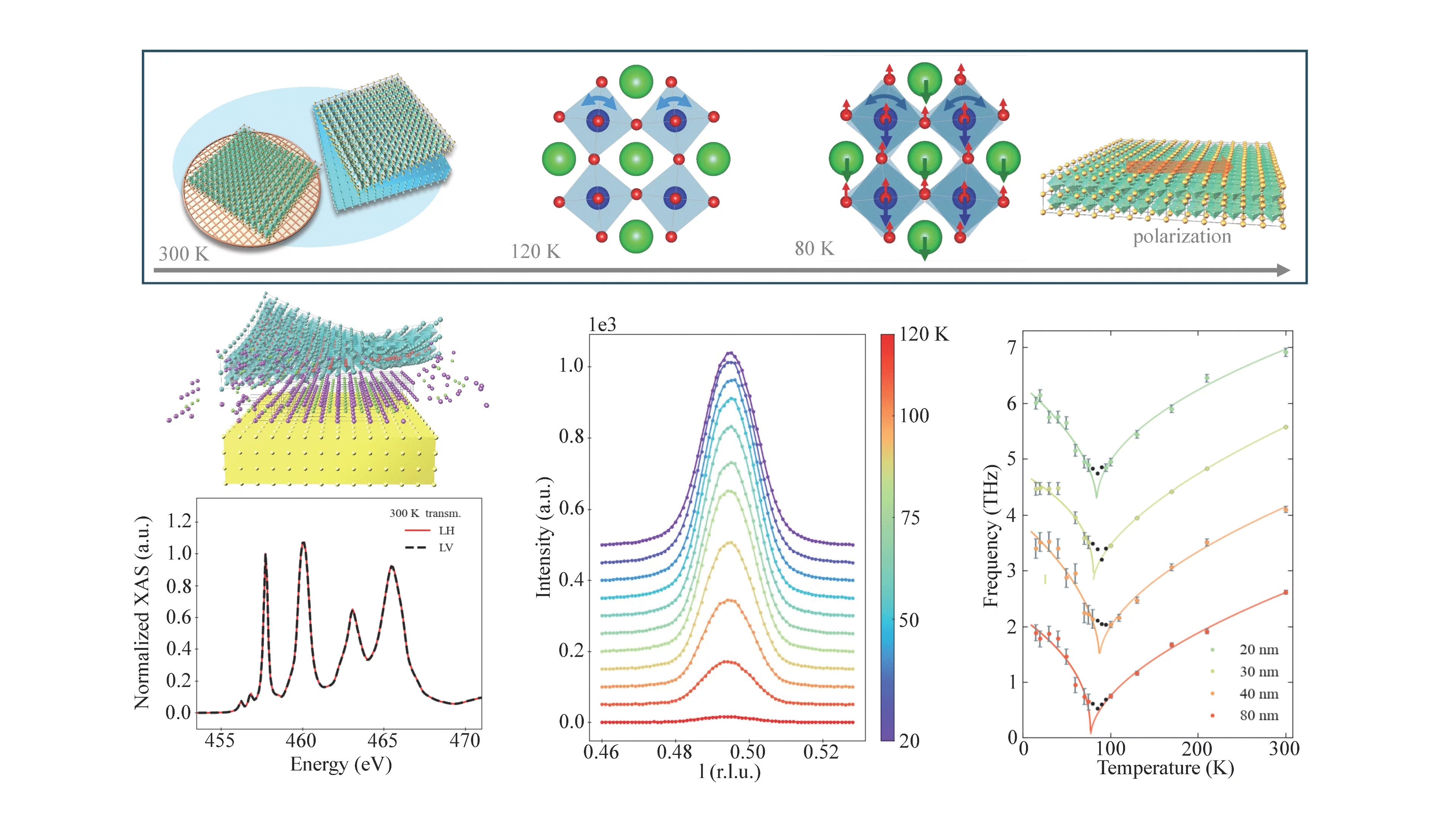Epitaxially grown thin films are commonly used to strain engineer electronic properties by the choice of a substrate, and therefore do not match bulk properties (leading to properties that deviate from the bulk material). Free standing ultrathin oxide films are expected to preserve the bulk-like properties due to the absence of substrate influence. However, we show that this expectation is not fulfilled with ultrathin free standing SrTiO3, as they get ferroelectric at 80K.
Thin films’ properties can be greatly influenced by their supporting growth substrates. Even in the so-called strain-free heterostructure films, it is still unclear whether there will be no interfacial electronic reconstructions induced by the underlying substrates. Here, we report the studies of SrTiO3 (STO) films in the freestanding form (FS) with thickness ranging from 20 nm to 80 nm. These STO films, by default are in a strain-free state; exhibit distinct properties not seen in both bulk and strain-free heterostructure forms. Our films show an enhanced antiferrodistortive (AFD) phase transition temperature with a preferential in-plane rotation axis for the TiO6 octahedra. The anisotropic Ti orbital occupancy around the surface signals the departure of its properties from bulk. Moreover, we have found that the in-plane ferroelectricity can be strengthened by the reduced dimensionality, establishing that the dimensionality control is an important factor for enhancing STO’s ferroelectric response.
Contacts
Dr. Shih-Wen Huang
PSI Center for Photon Science
Forschungsstrasse 111, 5232 Villigen PSI, Switzerland
+41 56 310 2340
shih.huang@psi.ch
Dr. Urs Staub
PSI Center for Photon Science
Forschungsstrasse 111, 5232 Villigen PSI, Switzerland
+41 56 310 4494
urs.staub@psi.ch
Original Publication
Antiferrodistortive and ferroeletric phase transitions in freestanding films of SrTiO3
Ludmila Leroy, Shih-Wen Huang, Chun-Chien Chiu, Sheng-Zhu Ho, Janine Dössegger, Cinthia Piamonteze, Yi-Chun Chen, Elsa Abreu, Alessandro Bombardi, Jan-Chi Yang and Urs Staub
Nano Letters 2025, https://doi.org/10.1021/acs.nanolett.4c05664 (link is external)

